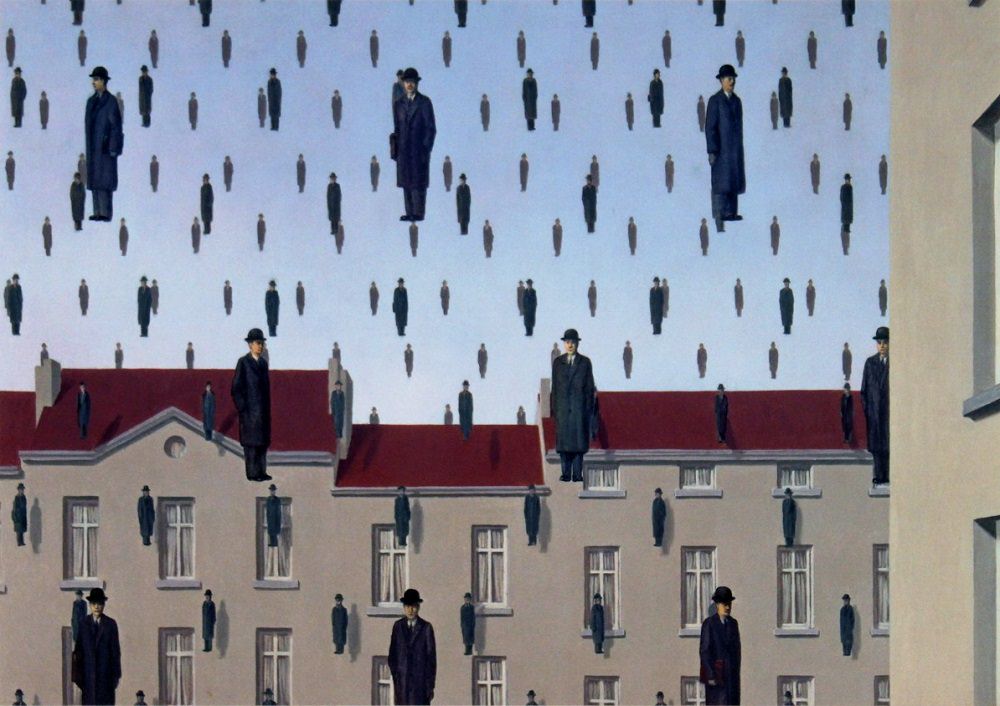
Golconda depicts a multitude of small and nearly identical men, wearing dark overcoats and bowler hats, who seem to be floating in mid-air. The backdrop features red-roofed buildings and a mostly blue and partly cloudy sky
Magritte lived in a similar suburban environment and dressed in a similar fashion. The bowler hat was a common feature in many of his works, and appears in paintings such as The Son of Man
The painting’s title may offer a hint for the meaning behind the image. Golkonda is a ruined city near Hyderabad, India. It was once the capital of 2 successive kingdoms and is known for its proximity to mines that have produced some of the most infamous diamonds in the world. One such diamond is the 191-carat 'Koh-i-Noor', discovered around the 13th Century, and is now part of the Crown Jewels of the British monarch
Due to the connotation of wealth associated with the city, the name today is listed in the dictionary to mean “a mine of wealth”. Because of this some have suggested that Magritte intended to comment on the blandness of the suburban lifestyle, despite the wealth possessed by the people there: being rich alone does not make someone interesting
The title was come up by his poet friend Louis Scutenaire and Magritte included a likeness of him in the painting (his face is used for the large man by the chimney near the centre of the picture). In fact, when examined closely, each of the men is a bit different: some have their hands in their pockets while others are wearing gloves; some carry a briefcase while others are empty-handed ……
As a Surrealist, Magritte is a master in taking simple motifs from everyday life and putting them into an unusual context to provoke fascination and suspense in the mind of his viewers
Charly Herscovici, who set up the Magritte Foundation in Brussels, commented on Golconda: “Ordinarily, you see a picture of something and you believe it …… you take its honesty for granted. But Magritte knew that representations of things can lie. These images of men aren't men, just pictures of them, so they don't have to follow any rules. This painting is fun, but it also makes us aware of the falsity of representation”
